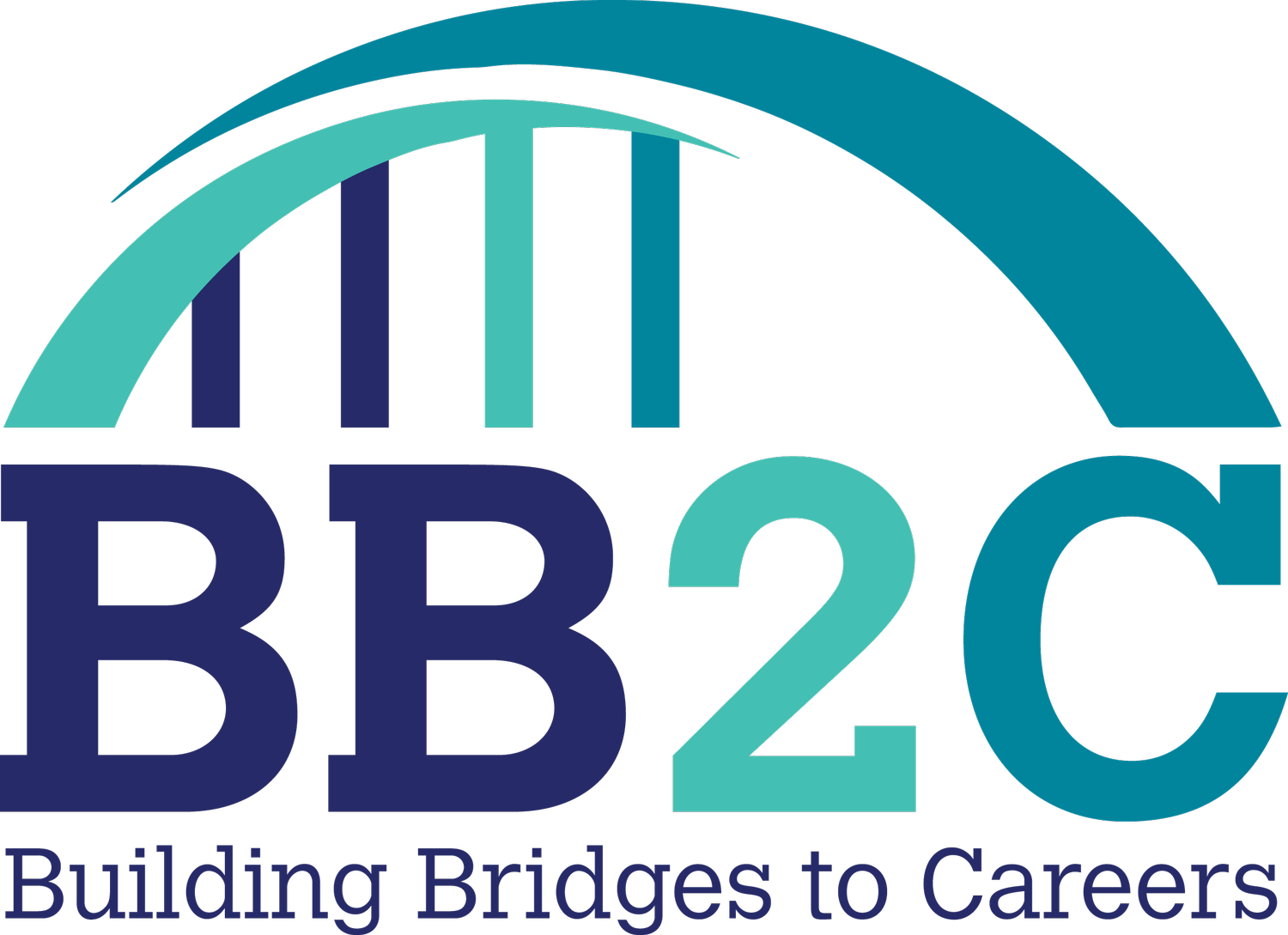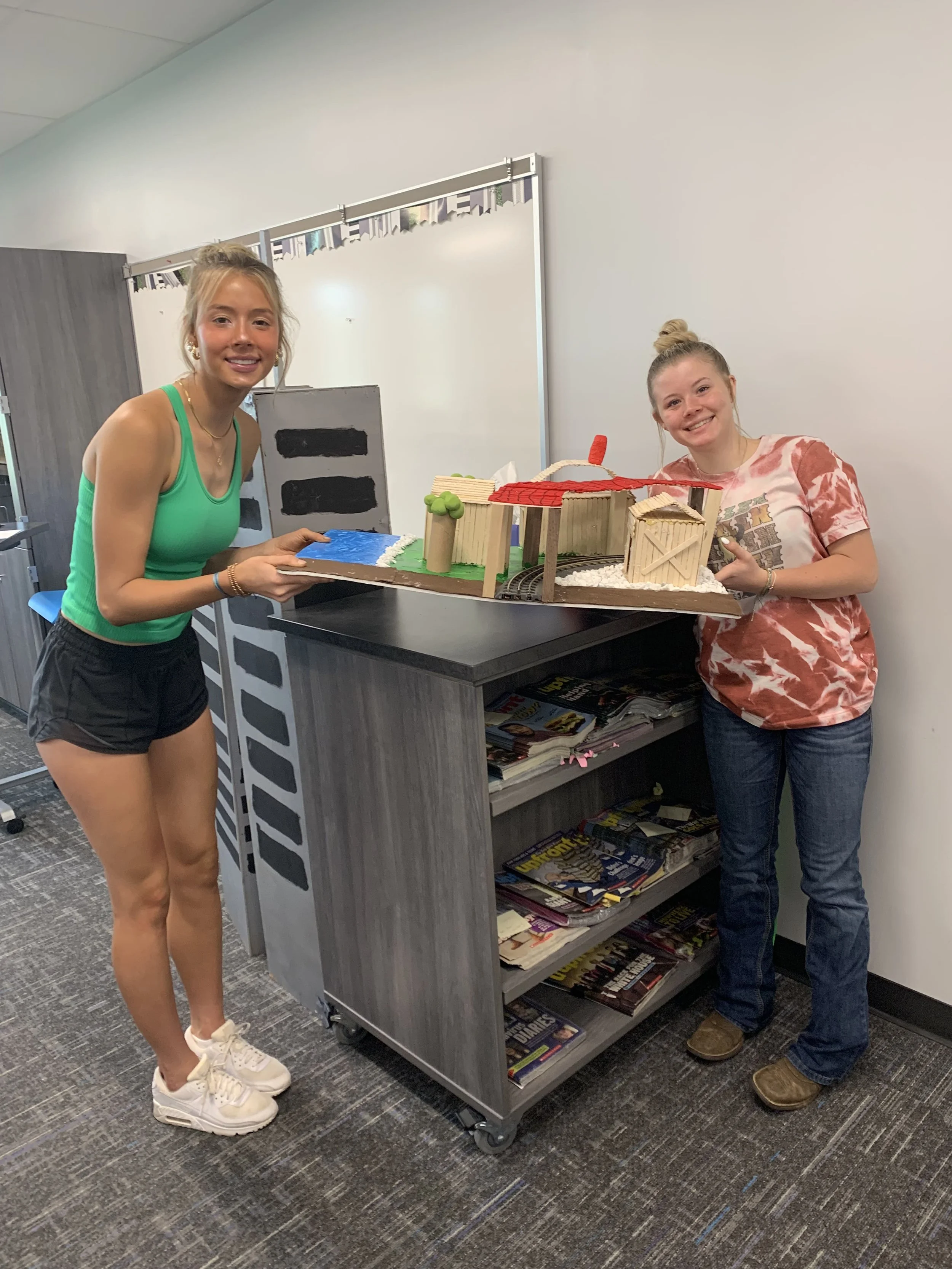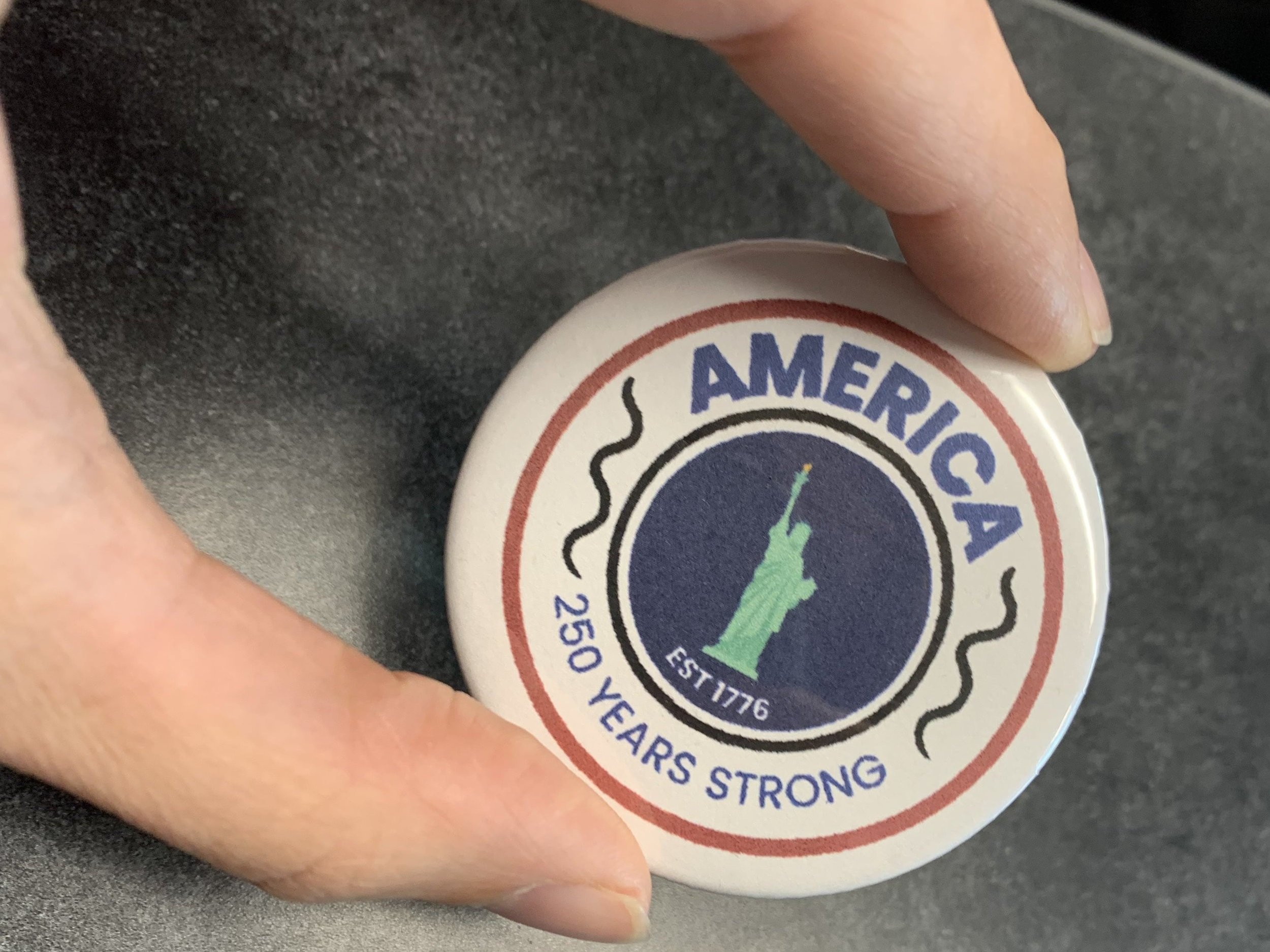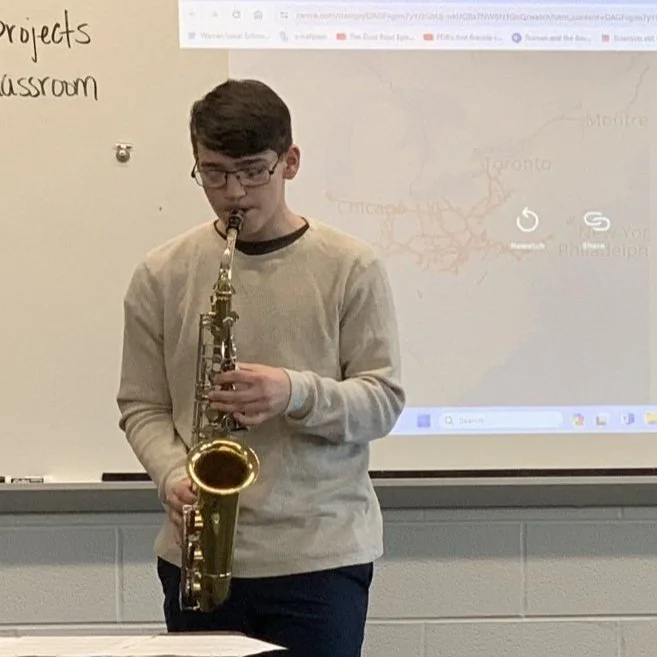Real-World Learning: An Educator’s Journey with Real World Problem Scenario
Students from Warren show off a model that they created as part of their Real World Problem Scenario with America 250.
For one Warren educator, participating in BB2C’s Real World Problem Scenario (RWPS) Program since its inception has been a game-changer — not just for their teaching, but for their students’ growth and confidence. Teaching sophomore American History, freshman World History, and a Sociology elective, Kerry Farnsworth has embraced the RWPS approach to make learning more meaningful and hands-on.
A button,with a logo designed by a student group for the America 250 RWPS.
“I’ve always enjoyed creative lesson plans,” Kerry explained. “It’s exciting to let the kids try something different. If it fails, it fails — but if it succeeds, it’s amazing!” That open mindset has led to some incredible student-driven outcomes over the years. From redesigning a health department’s website to proposing new events, students have consistently impressed with their creativity and problem-solving skills.
One standout project came from a sophomore American History class. Tasked with contributing to the America 250 Celebration, students generated a range of ideas — designing monuments, writing a song, organizing events, and even welding a “250” sign. “They asked if they could weld it, and I said, ‘Sure!’” Kerry recalls with a laugh. “It was incredible to see them bring their talents into the project.”
A key element of success has been involving business partners. Kerry was able to call upon BB2C staff for help, as well as leverage her personal connections, including her grandfather who held a trustee position. The students responded with solid research and practical solutions, impressing both the business leaders and their peers.
Reflecting on the program’s impact, Kerry notes how RWPS gives students agency and helps them connect history and sociology to real-world careers. “It’s about letting students take the lead,” she says. “It builds confidence and shows them how their ideas can make a difference.”
Moving forward, Kerry hopes to see RWPS become more cross-curricular and provide more direct feedback to students. “It’s a great way to drive student learning and build community,” she says. “The students learn that behind every business, there’s a story — and they have the power to help shape it.”
Students have been equally excited about learning through Real World Problem Scenarios. They shared:
“It made me want to learn more because who knew that so much could happen in the little areas around us, and we don't even realize.”
“I felt like I learned a lot about America and completing the project made me feel accomplished.”
“Knowing that you could have an opportunity to help in your community [was the most rewarding part of RWPS].”
“The greatest reward I think would be the ability to freely come up with an idea that could benefit the community and being able to do that with a group of like-minded individuals.”
A student plays a song that their group wrote for America 250.
“Getting to learn more about the local area that I wouldn't have known without doing the research that I had done.”
Interested in learning more about Real World Problem Scenario, bringing it to your school or classroom, or involving your business? Contact our Educator Engagement Specialist, Emily Bentley, at ebentley@bb2careers.org.



